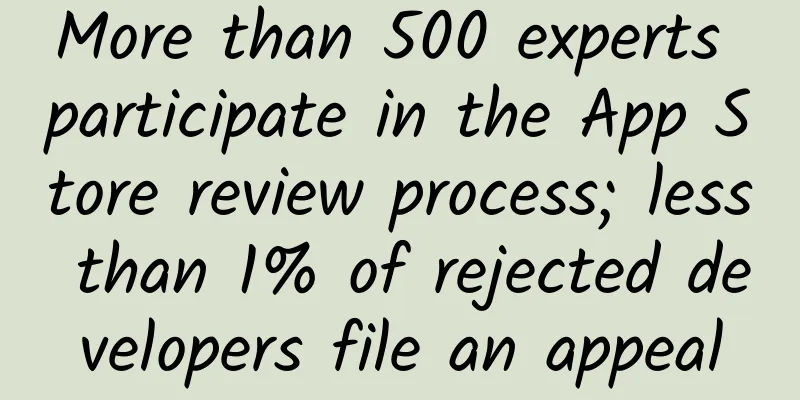[Smart Farmers] Small insects, big harm - Bemisia tabaci
![[Smart Farmers] Small insects, big harm - Bemisia tabaci](/upload/images/67f24954823c5.webp)
|
Alien species invasion is a global ecological problem today, which can cause ecosystem damage, biodiversity reduction and huge economic losses. Bemisia whitefly, recognized by the Food and Agriculture Organization of the United Nations as the world's second largest pest, is the only agricultural pest dubbed a "super pest" so far and is listed as one of the 100 most dangerous invasive species. "Super Pest" Whitefly Bemisia tabaci belongs to the order Hemiptera, family Aleyrodidae. It originates from tropical and subtropical areas of the Middle East, North Africa, and the Mediterranean. It was first reported in 1889 and was found on tobacco in Greece and named Bemisia tabaci. Since the 1980s, with the help of the trade of flowers such as poinsettia and other economic crop seedlings, Bemisia tabaci has spread and spread worldwide and has become a disaster. It is now widely distributed in more than 90 countries and regions around the world. In China, Bemisia tabaci was recorded as early as 1949, but it has not caused serious damage and is not a major economic pest. It was not until the 1990s that Bemisia tabaci damage in some parts of Guangdong Province was found to be more serious year by year, which attracted widespread attention. Bemisia whitefly is a metamorphic insect. Individual development goes through three stages: egg, nymph, and adult. The last instar nymph is usually called a pseudopupa. Bemisia whitefly adults have obvious tenderness and phototropism. As the plant grows, the adults continue to transfer damage to the upper young branches and leaves. Bemisia whitefly is a rapidly evolving complex species that includes multiple biotypes. At present, at least 32 biotypes of Bemisia whitefly have been reported. Different biotypes of Bemisia whitefly have significant differences in host range, virus transmission ability, and pesticide resistance. Among them, MEAM1 (Middle East Asia Minor 1, B) and MED (Mediterranean, Q) are the most invasive and harmful. Bemisia tabaci (picture from the Internet) Damage caused by whitefly The reason why whitefly has become a super pest widely distributed around the world is that it can not only harm fruits and vegetables of Solanaceae, Cucurbitaceae, and Cruciferae, but also cotton, corn, legumes, and a variety of horticultural flowers. At present, more than 600 host plants have been reported. Whitefly harms plants mainly in the following three ways: (1) Direct feeding. It directly pierces the phloem with its mouth needle and absorbs nutrients from it, causing the plant's own nutrients to be consumed and its growth to weaken. (2) Secreting honeydew to induce sooty mold disease in plants. After sucking plant sap, whitefly will excrete a large amount of honeydew containing sugar. This honeydew will cause the rapid reproduction of fungi and induce sooty mold disease in plants, affecting plant photosynthesis, resulting in a decrease in crop yield and quality. (3) Spreading plant viruses. Many viruses such as tomato yellow leaf curl virus and tomato chlorosis virus can be transmitted between plants through whiteflies, causing outbreaks of plant viral diseases between plants, resulting in serious consequences such as crop yield reduction or even crop failure. This is also the most serious way for whitefly to harm plants. The harm of whiteflies to plants (picture from the Internet) Tomato fruit infected by tomato yellow leaf curl virus (picture from the Internet) Control of Bemisia tabaci The whitefly is difficult to control because of its wide range of hosts, waxy body, overlapping generations, fast reproduction, multiple ways of spreading, fast migration in large fields, and high resistance to chemical pesticides. Whitefly control mainly includes various measures such as agricultural control, biological control, chemical control, and physical control. (1) Agricultural control: timely remove dead branches and leaves and weeds, bury them deeply or make compost to eliminate the larvae, eggs and pseudopupae hiding in them. Optimize the planting system, arrange the planting rotation reasonably, implement water-land rotation, and avoid continuous cropping. (2) Biological control: The natural enemies of whitefly are abundant. Worldwide, there are more than 55 known parasitic natural enemies, mainly small wasps of the genera Enmyrna and Aphididae, more than 114 predatory natural enemies, mainly ladybugs, lacewings, predatory bugs, predatory mites, etc., and 7 pathogenic fungi, mainly Aspergillus aleyrodida, Verticillium lecanii, Aspergillus mealybug, Paecilomyces fumosorum, Beauveria bassiana, etc. Natural enemies have a significant control effect on the growth of whitefly populations. (3) Chemical control: Although whitefly has shown strong resistance to conventional organophosphates, pyrethroids, carbamates and other pesticides, chemical control is still a very important and effective measure. On the one hand, timely spraying of plant growth regulators can promote plant growth and improve plant resistance to insects and pests. On the other hand, insecticides can be used to directly eliminate a large number of insects and reduce the damage caused by whiteflies. (4) Physical control: Use the fact that whiteflies have a strong attraction to yellow to lure and kill adults. When the adults are at their peak, hang orange-yellow sticky boards in the field to lure and kill the adults. Research on the prevention and control of whiteflies shows that the prevention and control of whiteflies requires a combination of measures and comprehensive management. At the same time, whiteflies have a very high efficiency in transmitting viruses and a strong reproductive capacity. In order to achieve the goal of "preventing insects and controlling diseases", whiteflies must be prevented in advance. Author: Luo Mingdan (graduate student of School of Life Sciences, Hubei University) Scientific review: Xu Letian (Associate Professor and Doctoral Supervisor at Hubei University) |
>>: It’s 2023, does anyone still wear mink?
Recommend
What superpowers do growth hackers need?
I've recently been reading Fan Bing's &qu...
"Love Stocks·Big Sister of Fortune" synchronous message group, mid- and long-term value investment
"Love Stocks·Big Sister of Fortune" syn...
Are tablets more effective if they are chewed up? Are free-range eggs safer and more nutritious? Rumors on the November Science Rumors List
1. "It is better to chew the tablets and tak...
GM accused of manipulating U.S. autonomous driving legislation
This year, at least five states — Georgia, Illino...
"Nezha 2" has exceeded 10 billion box office! These three types of people are not recommended to watch the 3D version
Review expert: Peng Guoqiu, deputy chief physicia...
After more than ten years, the Three Gorges Dam is still as solid as new. What’s the secret?
What is the largest hydroelectric project in the ...
More than 110,000 users added per month! Google advertising operation process and detailed explanation
The Google Store APP advertising promotion that I...
Popular Science | Answers to common questions about orthokeratology lenses
Recently, many parents and friends have come to o...
After watching 1,000 videos, we summarized 10 ways to make money on Douyin!
In the past two days, I have watched more than 1,...
Double Eleven "Building Activity" Addictive Model!
Late October to early November is an unstable per...
Green plums, the ultimate romance of the Chinese people
Written by Wei Shuihua The Latin scientific name ...
What magical data are there on Double 11 this year?
One minute with the doctor, the postures are cons...
Asu Men's Physical Fitness Improvement Course, 10 lessons in the Sexual Ability Max Training Camp will help you improve your combat effectiveness
Asu Men's Physical Fitness Improvement Course...
When someone calls, he will answer anything you give him? Really?
Audit expert: Taozi National Psychological Counse...
Technology Post: How to apply AI natively to Android system
[51CTO.com Quick Translation] Compared to reading...









